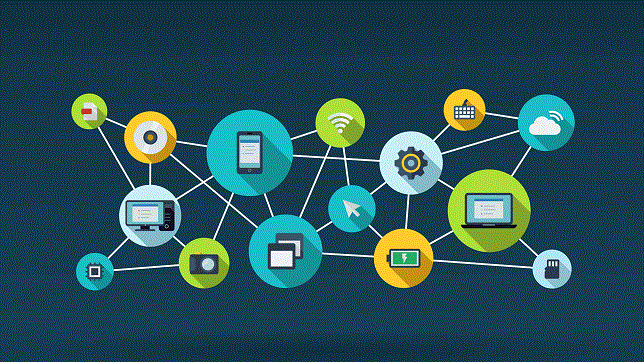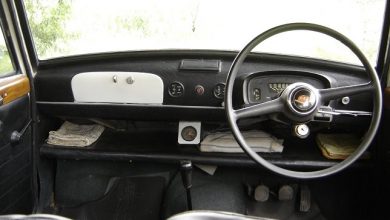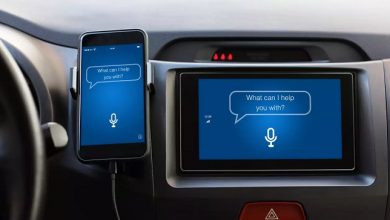Accelerating Automotive Connected Technology in India

Various industry forecast suggests that the global market of connected devices will go to $ 1.6 trillion by year 2030. The value will be realized with approximately 24 billion connected devices. Compared to 2021 we are looking at 11% – 12% CAGR to attain this number. The staggering growth will come from consumer IoT devices which will still account for 65% of all the end point connections. Although, lesser in numbers the value add on enterprise IoT will be significant and categories that will continue to grow within enterprise IoT are connected car, fleet telematics and asset tracking.
India IoT growth story is also very promising. FICCI estimates suggest that in Year 2021 the total number of M2M connections stand close to 500 million with connected car and fleet telematics registering strong growth. The cost of data in India is amongst lowest in the world. 1GB data in India cost approximately $0.26 compared to global average of $8.53. India has the right demographic mix to try new technologies and the IoT market and specifically Automotive IoT market will continue strong growth.
Use of connected technologies in automotive industry has significant economic benefits. It can be used for effective track and trace. The live tracking of fleet trucks and consignment improves logistics outcome and at the same time this simple but extremely powerful feature can be used to extend safety, to reduce accidents, and eventually to save lives.
Connected as a case for vehicular safety
In India, 150,000 lives are lost in road accidents and it is a huge socio-economic loss. There are multiple vehicular technologies that have potential to contribute towards reducing these numbers drastically. Connected / Telematics also is a powerful technology which if leveraged adequately can contribute towards saving lives. From Jan 2019, Government of India through AIS140 automotive standard has made it mandatory for all public use vehicles to enable real time tracking via telematics device and mandated an installation of panic button in the public use vehicles. In case of emergency, the occupant can press the emergency button and the information is relayed to the state emergency response control room. The law enforcing agencies will respond and because there is live tracking, they would be able to locate the vehicle in real time and ensure citizen safety.
The technology can be extended permanently to all vehicles through an embedded telematics unit. The functionality called e-call will enable the vehicle to detect accident on its own and make an emergency call. There are sophisticated sensors available to detect collision or fall and these sensors can relay information to telematics unit to make such a call. The first responders then can reach out to the site of accident quickly and can contribute to saving lives and to improving the outcomes post accidents.
Connected as a case for economic efficiency
Indian commerce is growing at a rapid scale and it also demands more predictable outcomes from logistics. Connected technology has been leveraged from as early as year 2008 to enable real time tracking of long-haul trucks and enforce SLA’s for high value consignments. It is now possible to do data driven dynamic route planning, real time consignment monitoring and active journey risk management. These measures enabled via telematics ensure that the vehicle, the consignment and the driver travel between location A to location B in most efficient and safe manner. The immediate technical advancement in this area is creating driver driving score by monitoring multiple parameters as he/she drives along the route and use this powerful data to organize driver safety trainings. These trainings contribute a long way in reducing journey risk. Specialized cargo movement (like vaccines, perishables etc) is also enabled by using telematics device to transfer the critical quality parameters in real time to control room and same can be monitored against target values to regulate quality of shipment being transferred. There are multiple business models emerging (like marketplace) to do real time matching of fleet with consignments thereby providing efficient utilization of asset.
Key enablers for Connected technology
In the automotive world, the key technology elements of telematics sub-systems are – Navigation, Telematics Control Unit, Vehicle to X Units, Intelligent Antenna Module and Wireless Connectivity Module. Since the telematics sub-system also enables remote connectivity & collection of data a strong cloud enabled IT backbone and telecom operations is mandatory for seamless integration and operations of technology stack.
We are witnessing strong advances in technology in each of the key elements of telematics sub-systems and following are the key drivers –
- Service oriented Architecture – embedded architecture is giving way to service oriented architecture. It has a base layer of embedded at edge followed by an edge client that connects embedded to IT architecture where data streaming, abstraction and storage is taken care. Big players like Microsoft, Amazon, Google are investing heavily in PaaS components, in time series database and in technology for storing data for analytics.
- New automotive Operating systems – the operating system of the connected vehicle is the new battle ground. Big tech giants are in race with Android Auto, Apple Car Play and Baidu Car Life leading the race. The power of these OS will unlock the personalization in car like never before. Native app ecosystem, seamless integration with smart phones and deep software updates / data logging is now becoming possible with unique API’s in OS.
- Powerful vehicle domain controllers – with an ability to handle / process huge amount of data required to deliver use cases. Combined with HSM (hardware security modules) these vehicle computers are key enablers within the vehicle E&E architecture.
- Telecom M2M and wireless advancements – several protocols of connectivity – 3G/4G/5G, NBIoT, Zigbee, BLE, Wifi, DSRC combined with equal advances on hardware are enabling seamless present and future V2X communication standards. These standards are also enabling multiple use cases within an outside the vehicle and making the vehicle truly wireless.
Creating a business case for Connected technologies beyond the obvious socio-economic benefits
Long term benefits of the telematics are obvious, what is needed in India is building a ROI business case to get this started across automotive vehicle segments at an accelerated scale.
Investment in connected technologies is a CEO agenda for an automotive OEM as the investment is a basis for future data driven business models. The question is never “if” but “when” and “how”. All leading automotive OEM CEO’s understand the power of creating a digital twin of their customer journey. Connected technologies plays an important role there. Additionally, since these devices are connected there is a huge liability associated with data storage, data ownership, data interoperability and data security. The CTO / CIO of the automotive OEM has a huge role to play while building the business case. Some of the key pointers while looking at short term ROI from an OEM perspective –
- Data for Product Development – the embedded and software content is increasing in the vehicle. The development lifecycles are reducing to less than a year now from earlier 18-24 months. The connectivity in the vehicle gives the PD department of the OEM quality access to the vehicle dynamic data and trouble codes. It helps to shorten the endurance cycles, do real time corrections and to store more field endurance data of the part performance.
- Data for customer service – diagnostics trouble codes if collected and analysed across vehicle models can give important insights to OEM for doing spare part planning, preventive maintenance checks, training of workshop staffs and thereby improving overall customer NPS. The possibility to do remote diagnostic and over the air flashing can also be leveraged to better manage claims and to manage possible recalls in future.
- Data for supply chain – the real time tracking of manufactured vehicles can give a real time picture of inventory across supply chain. This helps in better sales forecasting and planning.
- Unique features for the product differentiations – there are OEM’s who are packaging three year connected car subscription at the point of sales. The technology is used to provide several cool features via consumer app, via car infotainment system and via integration between several automotive sub-systems (like remote door opening, remote ac on/off etc). With powerful telematics features like FOTA and OTA the features in the car could be upgraded remotely just like a mobile phone.
In addition to the automotive OEM, the data can also unlock potential for other stakeholders –
- Efficient citizen services – for instance toll booths at NHAI could be automated completely with route tracking of the vehicle and auto debit of the toll to the citizen account. The route information can also be used in an anonymized way to discover traffic patterns and for better highway maintenance and efficiency planning.
- Customized insurance plans – citizen can be asked to participate in a UBI (Usage based Insurance) plan by leading motor insurance companies. The data about driving behaviour can be positively translated into discounts on insurance. In long run such positive economic enforcement will improve driving skills of Indians on road.
- Location based services – an owner of the car is also a potential customer for the corporate world. Real time location-based offers would enable better conversion on highway and also within city limits.
It is quite possible for an OEM to create a strong business case for the additional investment of few hundred dollars in the telematics sub-system and market it efficiently to the end buyer. If done with urgency the installation rate of telematics system in India can move towards 100% in next 5-7 years.
As Nandan Nilekani said that Indians will become data rich before they become economically rich, there is also a possibility to create a data exchange for the connected vehicle user. The user can share the data at will to access better services and in few cases monetization.
Accelerating CASE – connected as a key enabler
Telematics and connected technologies are key enablers for CASE. Connected technologies (C of CASE) is a horizontal technology enabler to accelerate adoption of automated, shared and electrified. Let us briefly see how!
- Connected and Autonomous vehicles – SAE defines Level 1 to Level 5 autonomy levels. As the autonomy moves upwards from Level 2, real time decision making will shift increasingly to machine from man. An enormous amount of work is going in creating a high-definition maps and in addition a connected vehicle will ensure via V2X communication more real time information for the vehicle computer to take cooperative decisions in accordance with environmental data.
- Connected and Shared mobility – it is impossible to imagine shared mobility without connected technologies. Whether it is ride hailing, self-drive or peer to peer all business models need connected technologies to function. Imagine hailing an Uber or an OLA and the capability of the technology to ensure real time track and trace of the vehicle while it arrives at your location. Imagine in the background the algorithms of these tech companies to connect supply and demand in real time. All this was not possible without use of connected technologies. In addition all recent self-drive business models are dependent on remote tracing of vehicle, remote booking of the vehicle, remote unlock of the vehicle and also remote immobilization in case the vehicle goes out from defined geo-fence.
- Connected and Electric vehicles – electric vehicle ownership is not possible without a seamless access to the charging infrastructure. Real time information on left out range in vehicle combined with real time visibility of nearest charging station is required to put range anxiety at rest. This is enabled via connected technologies. In addition to it connected technology is used to collect real time endurance data of the battery in cloud (via BMS). This data could be used to enable proactive maintenance of the battery and also to understand the performance of battery and other powertrain components of the e-vehicles. For e-Vehicles the access to connected technologies is mandatory.
All these market trends will ensure a rapid adoption of connected technologies. It is estimated that by year 2030 connected technologies will start to support ADAS adoption in India.
As a summary investment in connected technologies is beneficial for all involved stakeholders due to significant economic and social benefits. It has to be accelerated in India through strong policy making, strong investment in “make in India” technologies, strong investment on skilling and last but not the least education of its benefits to the end user. The future of the Indian automotive industry is also fast moving towards connected and electrified as Phase 1 and it is heartening to see that all stakeholders are gearing towards making the most of it.
Author:

Kartikeya Joshi
Vice President
Minda Industries
Kartikeya is Vice President at Minda Industries. He heads the Telematics and Controller business. Kartikeya has 17+ years of rich diverse Industry experience across Automotive and Healthcare. Other than Minda Industries he has worked with Bosch and Philips. He was heading the Active Safety business for Bosch in India. He also co-founded a Health-tech start-up. He has done his MTech from Electrical Engineering Department, IIT Delhi. He has also done his MBA in Marketing and Entrepreneurship from Indian School of Business, Hyderabad. Kartikeya is very passionate about the use of technology to positively impact life.
Published in Telematics Wire





